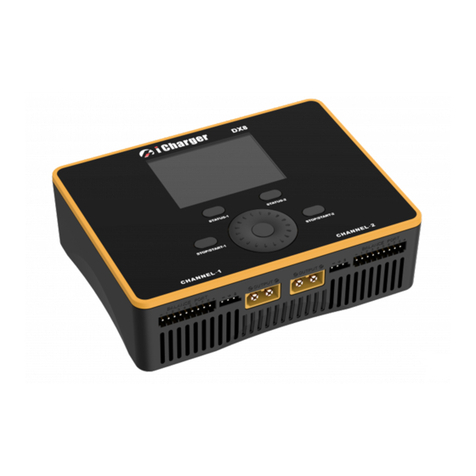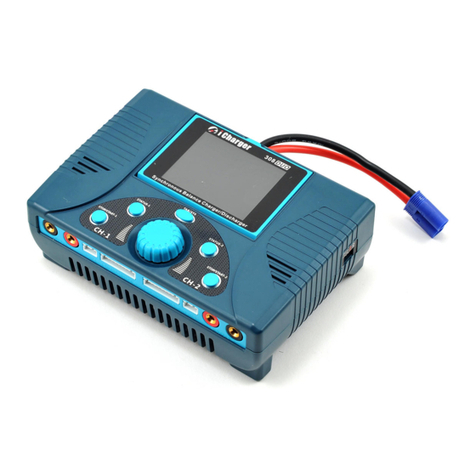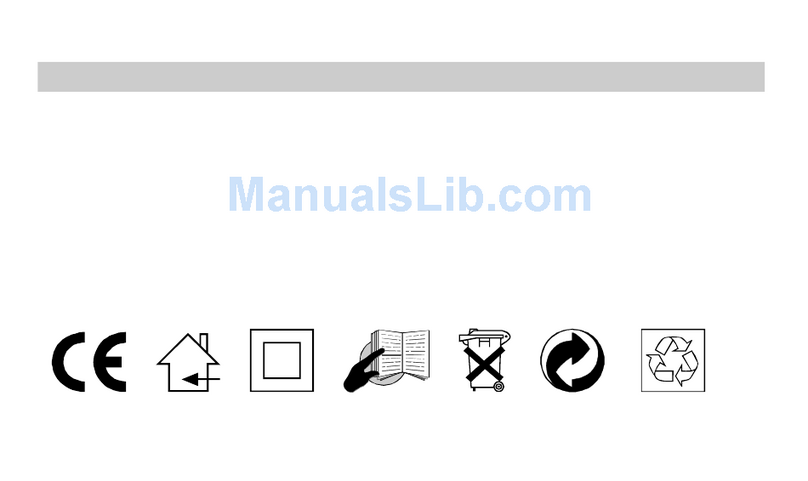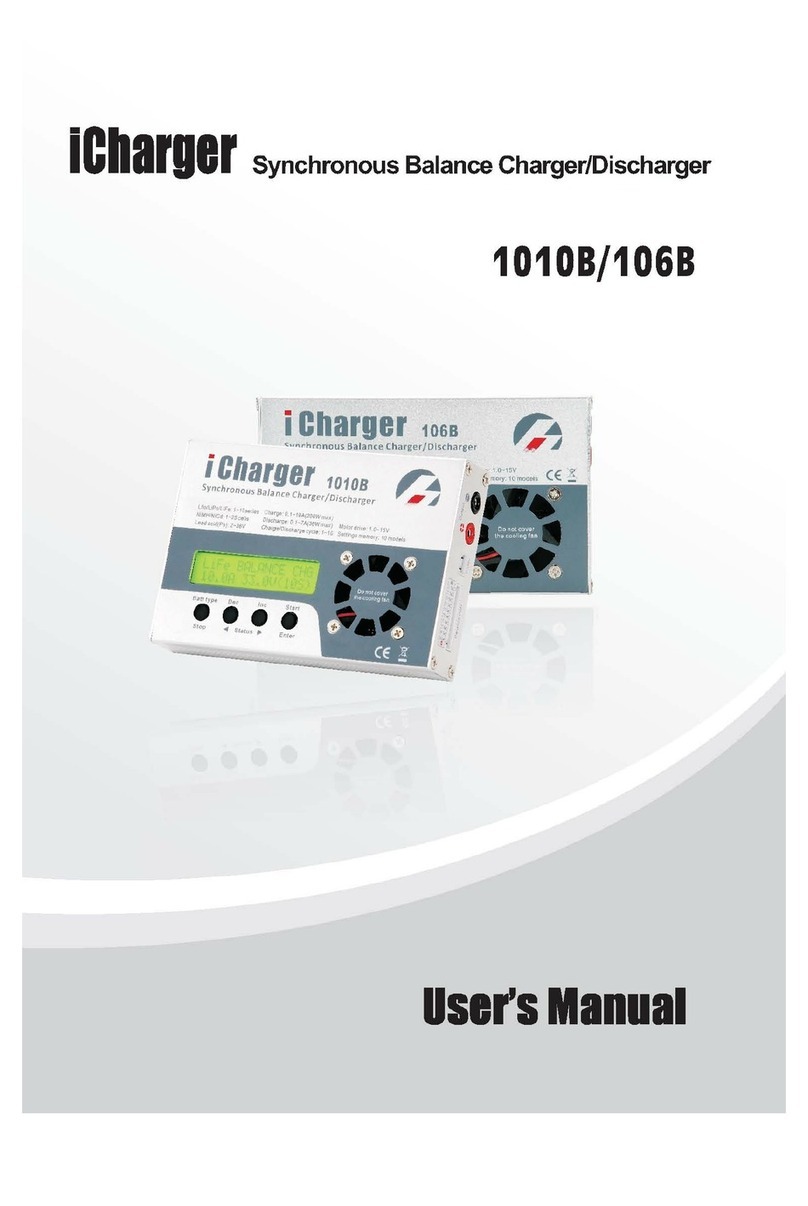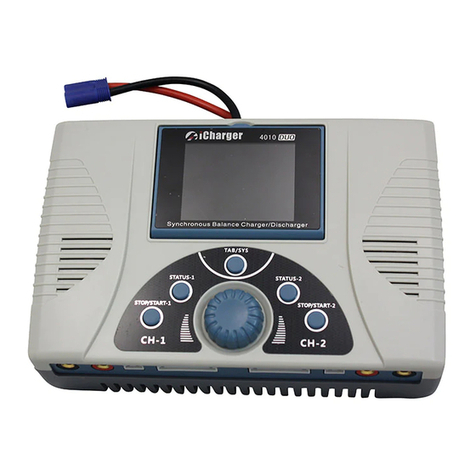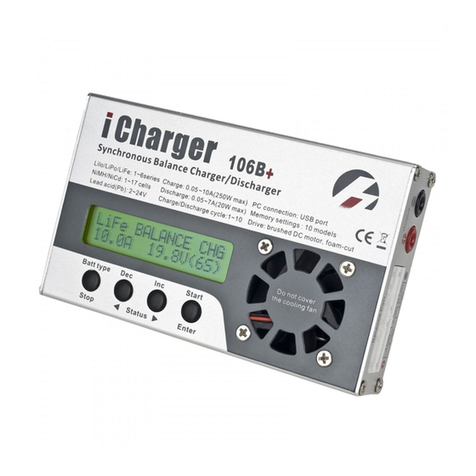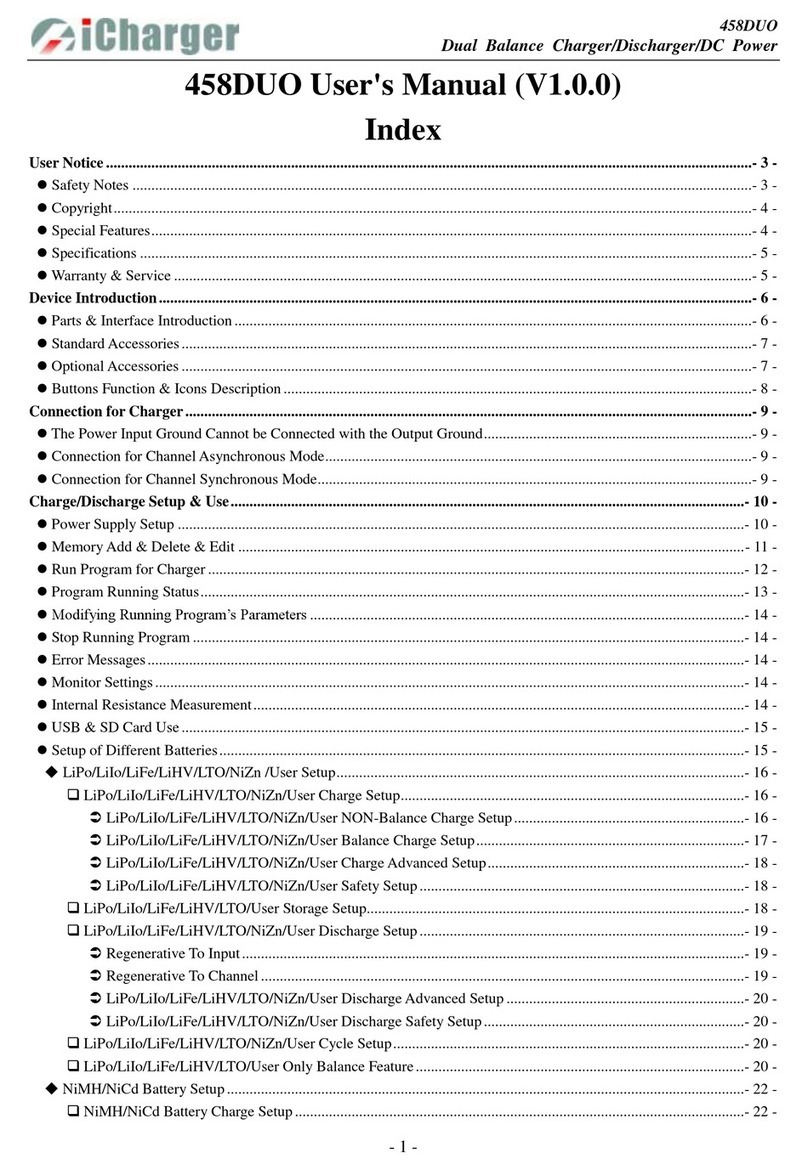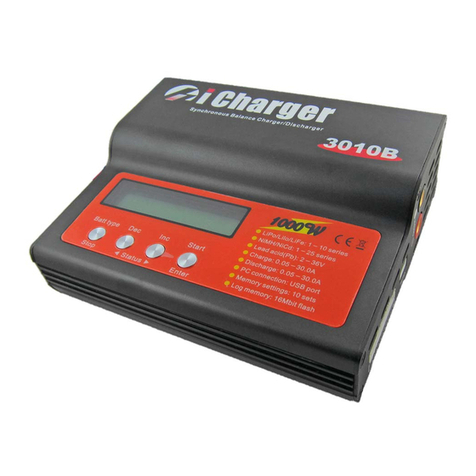
456DUO
Dual Balance Charger/Discharger/DC Power
NiMH/NiCd Battery Charge Advanced Setup ................................................................................................- 22 -
NiMH/NiCd Battery Charge Safety Setup......................................................................................................- 22 -
NiMH/NiCd Battery Discharge Setup ..................................................................................................................- 23 -
NiMH/NiCd Battery Discharge Safety Setup .................................................................................................- 23 -
NiMH/NiCd Battery Cycle Setup.........................................................................................................................- 23 -
Pb Battery Setup.........................................................................................................................................................- 23 -
Pb Battery Charge Setup.......................................................................................................................................- 23 -
Pb Battery Charge Advanced Setup................................................................................................................- 23 -
Pb Battery Discharge Setup ..................................................................................................................................- 24 -
Pb Battery Cycle Setup.........................................................................................................................................- 24 -
Digital Power Supply Setup .......................................................................................................................................- 24 -
Parameters Setup...............................................................................................................................................................- 25 -
Parameters Setup...........................................................................................................................................................- 25 -
Charger Setup.............................................................................................................................................................- 25 -
Temp. & Fans Setup..............................................................................................................................................- 25 -
Beep Tone Setup ...................................................................................................................................................- 26 -
LCD Setup ............................................................................................................................................................- 26 -
USB PD Setup.......................................................................................................................................................- 26 -
Output Power Setup..............................................................................................................................................- 26 -
Input Limit Setup..................................................................................................................................................- 27 -
Save & Load Configuration Setup........................................................................................................................- 28 -
Language Setup.....................................................................................................................................................- 28 -
Calibration ............................................................................................................................................................- 29 -
Extra Function ............................................................................................................................................................- 30 -
Log Files Manage .................................................................................................................................................- 30 -
Servo Test..............................................................................................................................................................- 30 -
Pulse Measurement...............................................................................................................................................- 32 -
Junsi Console for 456DUO................................................................................................................................................- 33 -
Firmware Upgrades...........................................................................................................................................................- 34 -
Firmware Upgrades via Junsi Console..........................................................................................................................- 34 -
Boot Mode.....................................................................................................................................................................- 34 -
Firmware Upgrades via SD Card...................................................................................................................................- 34 -
Important Notes.................................................................................................................................................................- 35 -
The Charging Principle for Reflex Charge Mode..........................................................................................................- 35 -
Power Regenerative Mode.............................................................................................................................................- 35 -
Channel Regenerative Mode .........................................................................................................................................- 35 -
Resistance or Bulbs ....................................................................................................................................................- 35 -
Charging Battery.........................................................................................................................................................- 36 -
Lithium Battery Extra Discharge Mode ........................................................................................................................- 36 -
Appendix............................................................................................................................................................................- 37 -
Status Indication of Running Channel...........................................................................................................................- 37 -
Status Indication of Channel Control ............................................................................................................................- 37 -
Error Messages..............................................................................................................................................................- 38 -
The contents of this manual are subject to update without notice. Some function descriptions in this instruction may be
different from the functions of the actual product. Please take the actual product as the standard.
